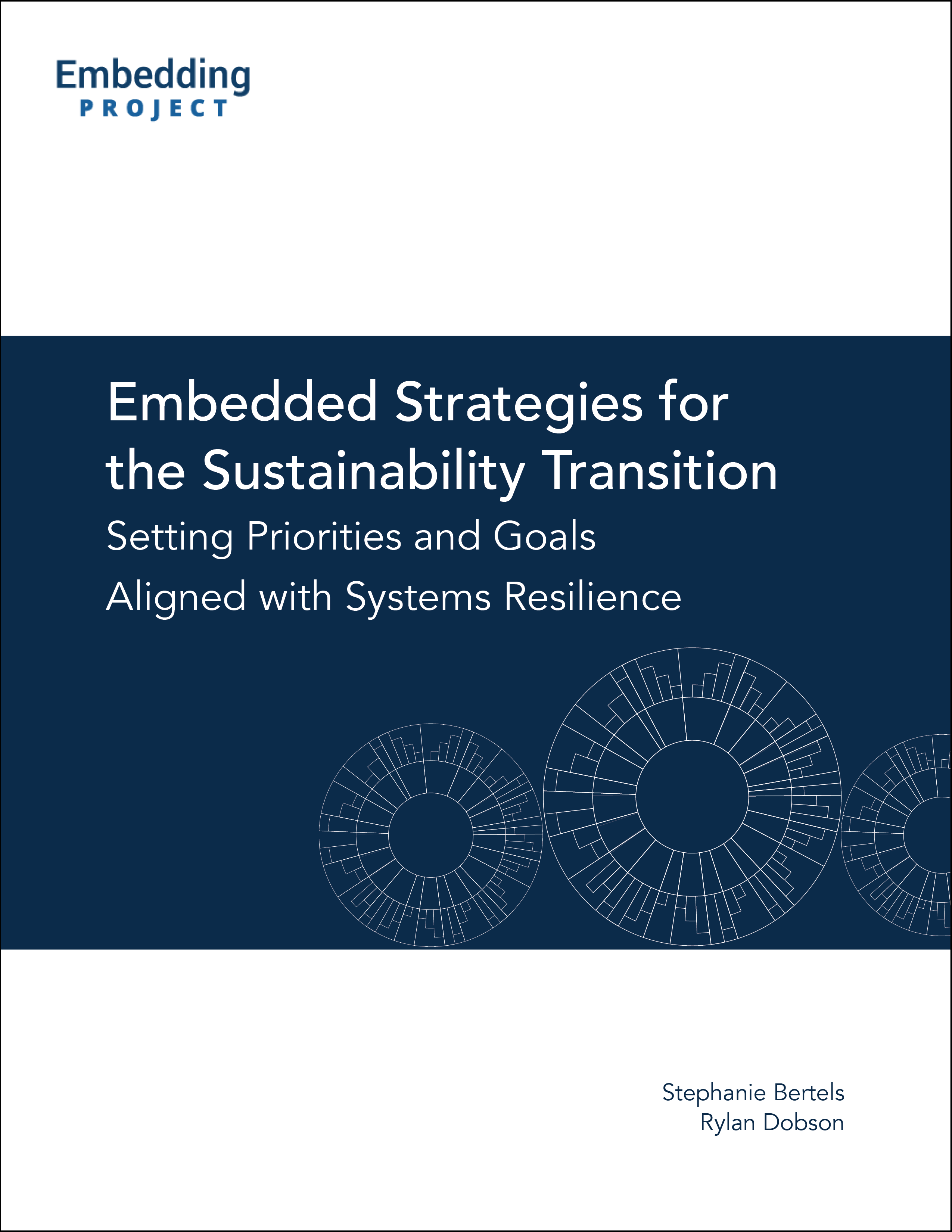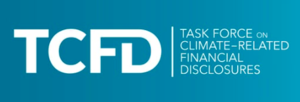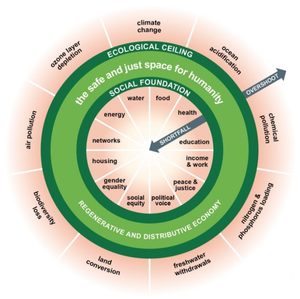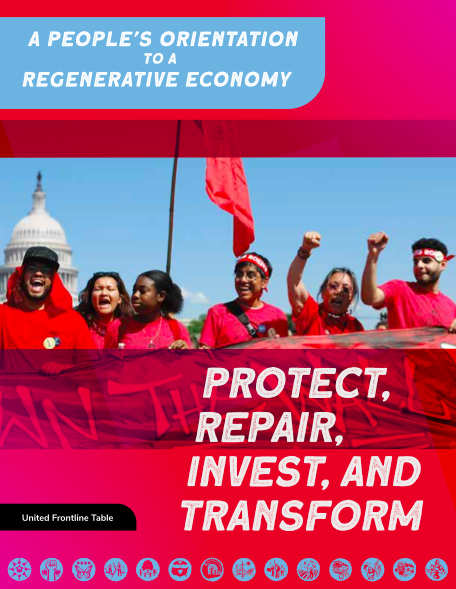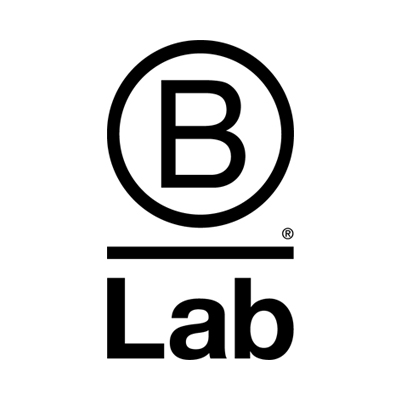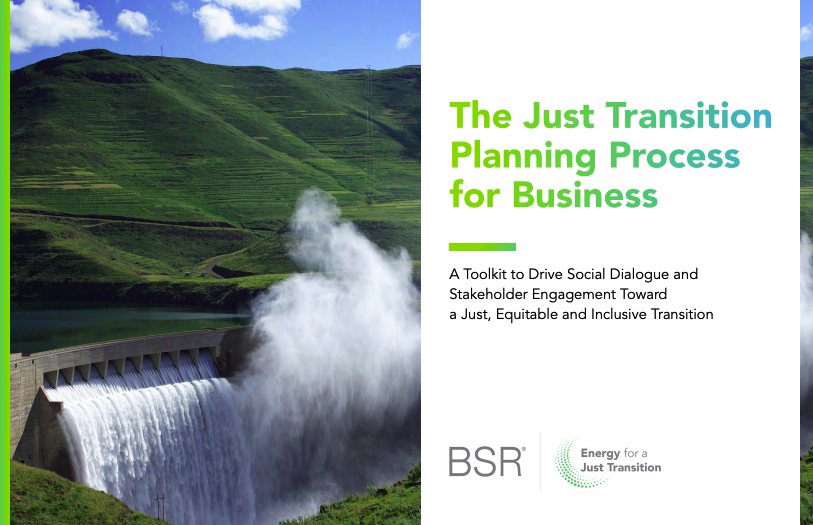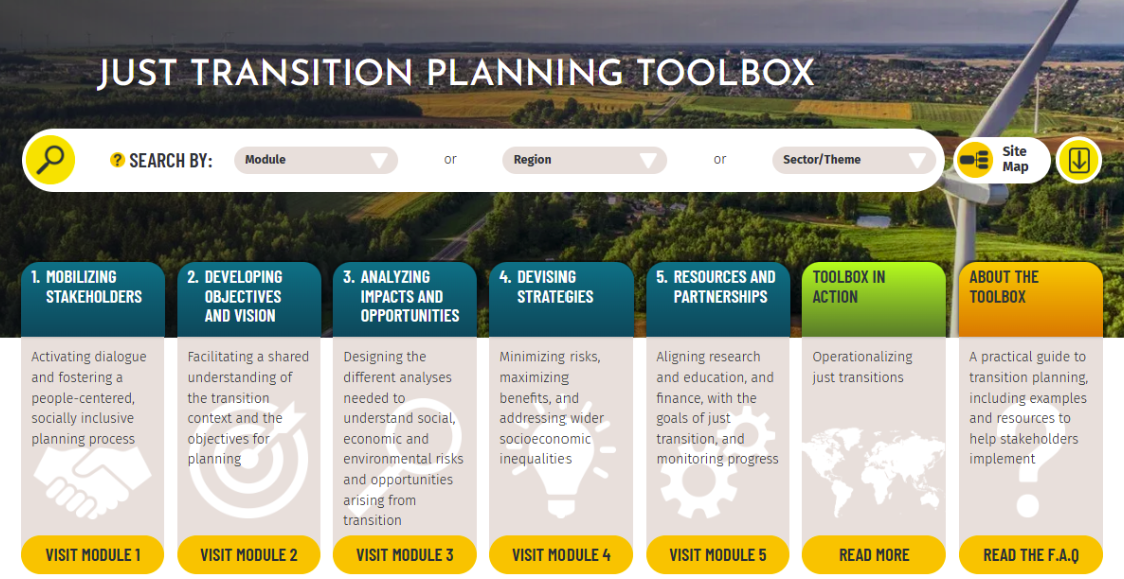Understand
Description
These resources will help you to gather internal and external information and make use of future thinking tools to deepen your understanding of the strategic relevance of particular environmental and social issues, your operational and value chain impacts, and the opportunities for broader role your organisation could play in contributing to positive systems change.
Share this Practice on:LinkedIn
Resources
Understanding Corporate Sustainability
Getting Started Guides: An Introduction
Whether you are developing your first strategy for sustainability or refining an existing one, our Getting Started Guides can help provide clarity on the work ahead. Getting Started Guides: An Introduction shares our overall approach and clarifies the value of setting a clear strategy anchored in your company’s most material issues. It also explains key concepts that underpin the work outlined within each guide, including building an understanding of system thresholds and process-based interim targets.
You can also find each of our issue-specific Getting Started Guides below.
Embedded Strategies for the Sustainability Transition
It is time for companies to take a very different approach to corporate strategy.
Our Embedded Strategies guide helps companies respond to the growing calls for businesses to articulate their purpose and their strategy in alignment with the need to shift the global economy towards the reduction of inequality, a rapid climate transition, the preservation of biodiversity, and the elimination of waste.
This guide will help you to develop a contextual strategy and goals that ensure your company is doing its part to maintain the resilience of key social and environmental systems.
Building on our Road to Context guide with insights from 300+ interviews with senior executives, CEOs, board chairs, and directors, as well as our experiences supporting companies around the world, it outlines resources and tactics that can help your company to scan for emerging issues and risks; understand their implications for your business; understand your impacts and your potential for positive influence; prioritise where it makes sense to direct your efforts; and set your strategy and goals in alignment with delivering systems value.
ENCORE (Exploring Natural Capital Opportunities, Risks, and Exposure)
ENCORE (Exploring Natural Capital Opportunities, Risks, and Exposure), a free tool from the Natural Capital Finance Alliance, can help you to visualise how your business may be exposed to accelerating environmental change. The tool provides a snapshot of the dependencies and impacts for a wide range of sub-industries and processes, and includes fact sheets and maps to help you understand the links between business activities and nature.
The Task Force on Climate-related Financial Disclosures
Momentum is growing for organisations to formally and transparently articulate the risks that climate change poses to the value of their assets and their future profitability. The Task Force on Climate-related Financial Disclosures (TCFD) emerged as a response to this call for action, empowering companies to more effectively measure and evaluate their own risks and those of their suppliers and competitors. The TCFD promoted “consistent, comparable, reliable, clear, and efficient” voluntary climate-related financial disclosures, and has developed comprehensive recommendations and resources in support of this. These resources focus on governance, strategy, risk, metrics, targets, and the use of scenario analysis for evaluating climate-related financial risks and opportunities.
The TCFD has produced a comprehensive Final Recommendations report and several supplemental reports, including a Technical supplement, which provides in-depth information and tools for using scenario analyses to understand the strategic implications of climate-related risks and opportunities to your organisation.
Although these resources remain to be an invaluable source of guidance, the Financial Stability Board (FSB) and IFRS have announced that the TCFD has fulfilled its remit and disbanded, and that monitoring of the progress of corporate climate-related disclosures now rests with the IFRS Foundation's ISSB.
The Taskforce on Nature-related Financial Disclosures
Reversing global nature loss depends on a shift in global financial flows away from nature-negative outcomes and toward nature-positive outcomes. This depends on large and small businesses across supply chains, financial institutions, and industries of all types collectively identifying, assessing, managing, and disclosing nature-related dependencies, impacts, risks, and opportunities. Towards meeting this inter-industrial challenge, the Taskforce on Nature-related Financial Disclosures (TNFD) was established in 2021 in response to the growing need to factor nature into financial and business decisions.
The TNFD has developed a market-led, science-based risk management and disclosure framework for organisations to report and act on evolving nature-related risks and opportunities. The TNFD has also developed case studies and sector-specific guidance; a Knowledge Hub that features a curated collection of the latest external resources and market insights on nature-related risks and opportunities; and an open-access Learning Lab that supports self-paced learning about nature-related issues, the TNFD recommendations, and additional guidance.
5 Steps to a Corporate Strategy That Delivers on Sustainability
To achieve the societal transformation we need, companies must do their part to embed sustainability into their core strategy. And that means focusing on more than shareholder value or even stakeholder value… It means focusing on systems value. We've created a straight-forward five-step process to help companies develop a truly embedded strategy.
Defining True Sustainability
In this brief article, Cory Searcy suggests that companies must change how they view sustainability if they want to determine whether or not they are sustainable. He explains how most companies currently focus on reducing environmentally destructive or unethical behavior, and how they must instead assess their performance relative to thresholds linked to the economic, environmental, and social resources on which they rely. This is a great, quick read that will help you articulate the need for moving beyond the 'triple bottom line' and towards a context-based 'embedded view'.
Scenario Planning for Climate Change: A Guide for Strategists
This book from Nardia Haigh takes a deep dive into climate change-related scenario planning and provides a framework that can help decision-makers develop a climate change strategy. The book builds on a range of rigorously tested scenario planning frameworks and provides a practical, four-step method for developing a scenario planning project. It also includes summaries of common climate change trends.
Her website also offers complementary videos, climate driver summaries, a sample scenario planning project proposal, and various worksheets to help you get started.
Strategic Foresight Primer
This introductory guide on strategic foresight is a good, accessible primer for board members, executives, and other business leaders who want to grow their understanding of and capacity for long-term scanning and planning. It explains what foresight is, what it is not, and what it can achieve. It also provides an overview of some of the most common methods and tools for effective strategic foresight.
Foresight Training Modules
These Foresight Training Modules were created by Policy Horizons Canada to help users build a better good understanding of foresight-related methodologies. The modules cover topics such as scanning, assumptions, and systems mapping, and they feature summaries, exercises, tip sheets, and even presentation and facilitation notes to support change agents in teaching this material to peers and leaders.
Although policymakers in government were the target audience for these modules, the content is equally applicable to educators and decision-makers in business.
Equitable Futures Toolkit
This toolkit aims to help you imagine a more equitable future through two different interactive approaches: through Institute For The Future (IFTF) Foresight Training and the Equitable Futures Card Game. These modular workshops would especially benefit sustainability practitioners who want to facilitate sessions with senior leaders. The tools included provide a novel way of helping participants to understand the factors impacting your business; to create meaningful social narratives that can guide strategy; to build awareness of the positive and negative consequences that your business has on the world around it; to develop an understanding of challenges to overcome and the values and tools needed to build a more equitable future; and more.
The Futures Toolkit: Tools for Futures Thinking and Foresight Across UK Government
This toolkit was created by the UK's Government Office for Science to help acquaint policymakers and government officials with foresight and futures thinking and to help with the creation of scenarios. We specifically recommend pages 26-76, which highlight a broad range of tools that can help you to gather intelligence about the future; explore the dynamics of change; describe potential futures; and develop and test policies and strategy.
Sustainable Development Goals Interactive Tool
IISD has developed a free interactive tool that directs users to SDG-related publications by region or goal. This tool provides insight into how the SDGs impact companies and communities around the world, and may be of particular use for companies with an international scope or those interested in entering new markets.
CISL’s Business Transformation Framework: Preliminary Diagnostic
This tool from the Cambridge Institute for Sustainability Leadership (CISL) can help you better understand how purpose-driven your business is. The Business Transformation Framework groups businesses into progressive categories: short-term self-interest; long-term self-interest (developing); long-term self-interest (mature); and purpose-driven. The self-reflective diagnostic tool can help you place your business along this continuum, as per an assessment indicators that includes organisational values, senior leadership, and financial management. This resource will be most useful to business leaders, change managers, and sustainability professionals seeking to drive business transformation.
The Ceres Roadmap 360º
This assessment tool from Ceres was designed to help small- and medium-sized companies assess and improve their sustainability performance. The tool features free, user-friendly, self-guided learning modules on management, engagement, and sustainability issues; additional modules can be unlocked with a premium account. The tool also produces customised reports that include a scorecard, best practice recommendations, and useful resources that can help you to embed sustainability into your strategic planning processes, governance systems, and decision-making.
Global Leadership in the Age of Turbulence
This report can help you understand the leadership challenge of our time—that is, the scale and complexity of “preserving human civilization." The report summarises the main insights from the 2024 Global Leadership Summit, including discussions of major trends related to geopolitics, innovation, governance, and economics. It then provides recommendations for leaders to enable a societal transition, which include accelerating innovation and the deployment of proven technologies; advocating for a new economic system that prioritises the social and environmental foundations that society is built on; and engaging citizens by repairing trust in political and corporate-level decision-making. These insights encourage a wider view of context and a longer view of history, which will be especially useful to business leaders.
The Global Regulations Radar: Bi-Annual Update on ESG and EHS Regulations
This bi-annual radar tool from the ERM Sustainability Institute can help you stay up-to-date on the sustainability regulations landscape. The radar provides an overview of ESG and EHS regulation in Europe, North America, and the Asia-Pacific region. It includes new regulatory developments and upcoming changes in each region and features an ESG and EHS regulations matrix, which lists the regulations that are expected to have the greatest impacts on companies with global operations. For each regulation, the matrix provides the rule highlights, scope, business context, timeline, and applicability. This tool will be most useful to your sustainability, and legal and compliance teams.
The Task Force for Corporate Action Transparency (TCAT)
The Task Force for Corporate Action Transparency (TCAT) is a new initiative dedicated to strengthening the credibility of corporate climate action through transparent, verified, and third-party assurable accounting and reporting guidance. Until now, companies have been able to report numerical emissions data through frameworks like the Greenhouse Gas (GHG) Protocol or set reduction targets through initiatives like the Science Based Targets initiative. However, these frameworks lack standardised methods for companies to report the specific actions behind those reductions (e.g. transport companies replacing diesel trucks with electric vehicles, manufacturers capturing and storing carbon dioxide in underground reservoirs, etc). TCAT intends to develop, publish, and promote technical guidance and methodologies that help companies report emissions reduction and removal efforts transparently and clearly, and address gaps in financial and GHG accounting, reporting, and assurance by developing and aligning with best-in-class standards and practices
TCAT has launched two comprehensive GHG reporting frameworks. Developed through a collaboration among environmental groups, accounting experts, NGOs, business practitioners, and civil society members, the guides are designed to help companies explain exactly how they are lowering their emissions in real time, and in a way that is comparable across industries and verifiable by third parties. These guides are designed to fill an important gap in how companies measure, report on, and verify their corporate climate actions.
The first framework is Mitigation Action Accounting and Reporting Guidance (MAARG), which equips companies with tools to account transparently for the full spectrum of ton-denominated climate actions. Its multi-statement approach enables companies to report on climate actions without conflating different types of activities; MAARG’s framework allows each action to be clearly categorised and measured. Rather than consolidating all GHG-related activities into a single statement, which can obscure the distinction between actual emission reductions and accounting-only or business changes, MAARG introduces a five-statement reporting framework which supports both inventory and impact accounting: physical inventory statement, contractual inventory statement, inventory impact mitigation statement, sector impact mitigation statement, and global impact mitigation statement.
TCAT’s second new framework is the Target Accounting and Reporting Guidance (TARG), which provides structured guidance for setting voluntary climate targets, tracking progress, and communicating results. This standardised approach enables stakeholders to assess the credibility and ambition of corporate climate targets and evaluate actual performance against commitments. In the absence of a unified framework in the voluntary reporting space, TARG fills a critical gap by offering clear and consistent methods for companies to disclose climate targets and report progress in a transparent and assurable manner. The framework is built around five core reporting elements: a target commitment report, base year emissions report, mitigation action report, target accounting report, and target attainment report.
Understanding Regenerative Futures and a Just Transition
The Social Foundation: 'A Safe and Just Place for Humanity'
Kate Raworth's “Doughnut” model is a key framework for understanding sustainability context. Building on the planetary boundaries framework as a 'ceiling', it adds social foundations as a 'floor' and underlines the need to operate in the space between. The social foundation is made up of 11 boundaries that draw attention to communities needing access to basic resources to fulfill their human needs. This access needs to be achieved in a way that does not place undue stress on the earth's resources. The framework is based on the premise that we should be striving to build and maintain social foundations while staying within planetary boundaries.
Safe and just Earth system boundaries
This study from the Earth Commission uses modelling and literature assessment to quantify safe and just Earth system boundaries for five critical domains: climate, the biosphere, freshwater, nutrient cycles, and aerosols at global and sub-global scale. It builds on the work of the planetary boundaries framework and proposes a set of safe and just boundaries for maintaining the resilience and stability of the Earth system and for minimising human society’s exposure to significant harm. The paper notes that the just operating space is smaller than the safe one for several of the boundaries, and that several have already been transgressed on a global and local scale. This means that unless a timely transformation occurs, irreversible tipping points and widespread impacts on human well-being are likely to be unavoidable.
A just world on a safe planet: a Lancet Planetary Health–Earth Commission report on Earth-system boundaries, translations, and transformations
This groundbreaking and comprehensive report explains that the Earth's safe and just space for humanity to survive and thrive within is shrinking. The authors assert that the only way to provide for everyone and to ensure societies, businesses, and economies thrive without destabilising the planet is to reduce inequalities in how critical Earth system resources (such as freshwater and nutrients) are accessed and used and to radically transform our economic systems and technologies.
Building on the work of the Safe and Just Earth System Boundaries report, scientists have added a “foundation” by quantifying the safe and just Earth-system boundaries (ESBs) that the global population depends upon to live a life free from poverty. The report describes a safe and just corridor that is essential to ensuring sustainable and resilient human and planetary health and defines eight ESBs across five domains; discusses the need for translating ESBs across scales to inform science-based targets for action by key actors; identifies the system transformations necessary to bring about a safe and just future; and more.
The Nine Boundaries Humanity Must Respect to Keep the Planet Habitable
This article provides a summary of the Planetary Boundaries Framework and explores the environmental transformations of the Anthropocene era, the early indicators of systems under stress and threatening collapse, the compounding effect of feedback loops, and crucial next steps. If you are new to the concept of planetary boundaries and thresholds, this is a good introduction.
A Good Life For All Within Planetary Boundaries
This tool allows you to explore and compare "national snapshots" of the resource use associated with countries meeting the basic needs of their peoples. This will help you to understand and compare national performance relative to the Doughnut of social and planetary boundaries so that you can better prioritise your sustainability-related efforts.
Planetary Boundaries: 'Let the environment guide our development'
First introduced in 2009, this framework identifies and quantifies nine planetary boundaries (or thresholds) which regulate the stability and resilience of the earth. Crossing these boundaries may generate abrupt and irreversible environmental changes that threaten the earth’s capacity to support human life. Tipping points have already been reached for climate change, biodiversity, land-system change, and the nitrogen cycle. In this TED talk, Johan Rockstrom from the Stockholm Resilience Centre introduces the framework, explores how human growth has strained resources, and explains how the global community can prioritise and scale solutions.
A Compass for a Just and Regenerative Business
This guidebook from Forum for the Future and WBCSD will help leaders and change agents to understand the vision of a just and regenerative future and the shift in mindset and activities required to get there. The guide provides a robust definition of what being just and regenerative means for businesses, introduces a compass that will help you to identify the stage your business is in (risk mitigation, zero harm, do good, or just and regenerative), and illustrates what a credible maturation arc can look like on a range of key issues. They have also created a supplemental report, the Guide to Critical Shifts, which can help you understand the critical shifts businesses can make to adopt a just and regenerative mindset. These guide will be useful across your organisation, with specific guidance provided for procurement, operations, marketing, finance, and leadership professionals, and more.
A People's Orientation to a Regenerative Economy
This guide from the United Frontline Table is an excellent starting point for understanding what a "regenerative economy" is and how your company can play its part in achieving it. It provides nuanced definitions for a range of intersecting issues and phenomena, including Climate Justice, Feminist Economies, Sacrifice Zones, and a Just Recovery and Just Transition. It introduces five critical points of intervention that will help to develop your narrative of positive contribution and shape policies that will uplift people and communities. The guide also includes a series of prompting questions, a framework for policies that will help you to advance a regenerative economy, and fourteen themes (or planks) that must be addressed to achieve a regenerative economy.
The Climate Justice Playbook for Business
Putting people and justice at the center of business efforts to address climate change is imperative to achieving the actions necessary to reduce and reverse its impacts on communities, the environment, and industry. B Lab’s Climate Justice Playbook for Business is a good starting point for understanding and enacting climate justice. It provides a sound business case for climate justice, features case studies of climate justice in action, and addresses key obstacles, insights, and questions. It also identifies the key stakeholders and rights holders who your business should collaborate with to maximise the scale and scope of your contributions to achieving a just transition.
Making Peace with Nature: A scientific blueprint to tackle the climate, biodiversity and pollution emergencies
This UNEP synthesis report can help you to better understand how climate change, biodiversity loss, and pollution can be tackled jointly within the framework of the Sustainable Development Goals. The report provides a translation of current scientific knowledge into accessible and actionable information. The report identifies the shifts needed to close gaps between current actions and those needed to achieve sustainable development, and although the information is most useful to policymakers, the content here clarifies the kinds of activities that businesses should elevate and support to credibly address intersecting environmental crises.
TPI State of Transition Report 2024
This annual report from the Transition Pathway Initiative Centre (TPI Centre) can help you understand the progress that over 1,000 of the world’s highest-emitting companies have made on responding to climate change and how far they are from where they need to be. The report is based on an assessment of two factors: “Management Quality,” which covers companies' climate reporting and targets, transition risks and opportunities, and transition plan credibility, and "Carbon Performance," which assesses companies’ greenhouse gas emissions pathways against low-carbon benchmark scenarios. It presents the state of transition through TPI’s latest findings; examines how Management Quality relates to Carbon Performance; and identifies defining features of high-achieving companies. It also explores geographic patterns in Management Quality and Carbon Performance and explains key implications for investors. This resource is designed for investors but will be broadly useful to finance teams, sustainability teams, and business leaders.
Indigenous Relations: Insights, Tips & Suggestions to Make Reconciliation a Reality
This book from Bob Joseph, founder and President of Indigenous Corporate Training Inc., is a good starting point for understanding preferred Indigenous terms; common myths and stereotypes about Indigenous Peoples; Indigenous worldviews and barriers to employment; Aboriginal Rights and Title; the differences between types of Indigenous leadership; and the effects of UNDRIP on the Rights of Indigenous Peoples in Canada. The book also introduces a training model (RESPECT) that will help you to build effective relationships with Indigenous Peoples. This resource will be of particular benefit to leaders and communications professionals working for organisations with operations in North America.
Embedding Just Transition into Corporate Climate Action Strategies
This brief from the ERM Institute can help you plan for a just transition by highlighting the social and human rights dimensions that need to be considered as you seek to decarbonise your value chain. It highlights questions to guide just corporate transition planning and identifies key just transition challenges and factors for success. It also highlights business responsibilities and contributions and provides example metrics for evaluating impact.
Doing Business Within Planetary Boundaries
This report can help you to understand how businesses and investors can address the climate and nature crisis by shifting how they measure corporate activities. The report is a collaborative effort from the Beijer Institute of Ecological Economics, Stockholm Resilience Centre, and the Biosphere Program at the Royal Swedish Academy of Sciences, and is the result of decades of collaborative and transdisciplinary research combining ecological economics, resilience science, and Earth system science with sustainable finance. The report argues that focusing attention narrowly on companies' most financially material environmental impacts impedes the assessment of cumulative environmental impacts. This undermines the ability to gauge where we are in relation to planetary limits, and is likely to lead to unreliable assessments of climate and nature-related risks and the inability to set informed targets. The report explains how anchoring corporate activities in the planetary boundaries framework can help businesses to drive sustainable transformation, and explains how more fulsome and accurate information about corporate environmental impacts and risk can support this. The report provides an overview of key features that characterise meaningful environmental disclosures as well as science- and sector-based guidance for prioritisation of data collection and disclosing essential environmental impacts. It also provides insights into a new science-based tool, the Earth System Impact score (ESI), which provides information on how a company’s local environmental impacts translate into global effects on climate and nature and can help businesses identify key areas for improving environmental performance and facilitating the development of strategic plans to enhance sustainability.
Exploring shared prosperity: Indigenous leadership and partnerships for a just transition
This report from Indigenous Peoples Rights International (IPRI) and the Business & Human Rights Resource Centre can help you understand why the benefits of the energy transition must be shared with Indigenous Peoples around the world. The first section outlines the growing trend of benefit-sharing between business and Indigenous Peoples in recent decades. It then explains the legal foundations for benefit-sharing, how it can create positive impact, and where it can go wrong. It also highlights co-ownership as an emerging model for benefit-sharing. The second section outlines the role of both government and companies in enabling the conditions for fair and equitable benefit-sharing. The third and final section offers project-level guidance on identifying and implementing benefit-sharing with a focus on equity co-ownership agreements. This resource will benefit professionals at any organisation whose activities affect the ancestral lands, territories, and resources of Indigenous Peoples, and will be widely applicable to project developers as well as sustainability, finance, legal, risk, and community relations teams.
Progress Achieved and the Path Ahead: The Final Report of the Transition Plan Taskforce
The Transition Plan Taskforce (TPT) was launched in 2022 to create the gold standard for transition plan disclosures. This report by TPT can help you understand their work, its uptake by businesses and regulators, and next steps. It starts with an overview of the disclosure recommendations and guidance materials developed by TPT. Then it outlines the significant progress made in transition plan uptake by businesses, financial institutions, policymakers, and regulators. This includes integration with the International Financial Reporting Standards (IFRS). Lastly, it highlights four key areas where collective efforts could be focused to ensure further adoption of transition plans across the global economy. This overview of TPTs works will be most useful to sustainability, strategy, and leadership teams.
Doughnut of social and planetary boundaries monitors a world out of balance
This article from Kate Raworth can help you to better understand the scale and scope of action required for humanity to eliminate social inequity and environmental decline this century. It unveils a renewed and strengthened Doughnut framework that features a revised set of 21 dimensions measured by 35 indicators of social deprivation and ecological overshoot over the 2000–2022 period. The article finds that while global gross domestic product has more than doubled in that span, median results show only a modest achievement in reducing human deprivation - one that must accelerate fivefold to meet the needs of all people by 2030. Meanwhile, the increase in ecological overshoot would have to stop immediately and accelerate nearly two times faster towards planetary boundaries to safeguard Earth-system stability by 2050. The report also demonstrates that the richest nations disproportionately contribute to annual ecological overshoot relative to their populations, whereas the poorest countries disproportionately experience social shortfalls. These trends and inequalities reaffirm the case for overcoming the dependence of nations on perpetual GDP growth and reorienting towards regenerative and distributive economic activity - within and between nations - that assigns priority to human needs and planetary integrity. The article provides additional insights and analysis of 21st century trends, and explores critical transformations that are essential to redefining and reorienting progress.
Resilience Science Must-Knows
This report from Stockholm resilience Centre, Future Earth, and the Global Resilience Partnership distills decades of resilience science research into nine critical "Must-Knows" that can help you to better understand how nature, societies, and economies can thrive within planetary boundaries. Synthesising insights from multiple areas of resilience research and informed by practice to ensure both scientific validity and real-world relevance, the report was developed through engagement with experts, peer-reviewed literature, dialogue with decision-makers, and global editorial leadership. Understanding these "Must-Knows" will benefit executives and directors directly, as well as change agents that want to prime and develop the sustainability-related sensibilities of senior leaders.
Just Transition in Supply Chains: A Business Brief
This resource from the United Nations Global Compact can help you to better manage converging risks that may impact your business by placing a just transition at the centre of their risk management strategies. The brief outlines policies and practices your company can implement to manage the environmental and social impacts of your supply chain; highlights the importance of an enabling environment for a just transition (including multilateral guidelines and frameworks, the role of governments, and the importance of multi-stakeholder collaborations and business coalitions); and provides recommendations for businesses to improve their sustainability and resilience, including real-world examples.
The Just Transition Planning Process for Business
This guidance from BSR offers practical steps that can help you to formulate a just transition plan. The guide explains why a Just Transition is crucial for the energy and utilities sectors, as well as the current state of play in those sectors; what Just Transition planning is; and why Just Transition planning is important. It also includes a five-phase process of Just Transition planning, featuring implementation tools for external stakeholder engagement and social dialogue, internal knowledge-gathering and discussions, and a company-wide integration strategy.
Although tailored toward the energy and utilities sectors, the learnings herein are applicable to other sectors and company types.
Just Transition Planning Toolbox
This resource from the Climate Investment Funds can help you to work through the complexity of planning for just transitions across key sectors. It features five modules (mobilising stakeholders, developing objectives and vision, analysing impacts and opportunities, devising strategies, and resources and partnerships), each of which include key planning steps, tools, and case study examples.
Other Resources
Liberating Structures
There are five conventional structures that guide the way we organise routine interactions and how groups work together: presentations, managed discussions, open discussions, status reports, and brainstorm sessions. These structures, however, can stifle inclusion and engagement, and are often too inhibiting or too loose and disorganised. To complement these more conventional options and improve shared knowledge and engagement, Liberating Structures introduces a menu of 33 innovative methods. Each method includes expected outcomes, step-by-step instructions, "tips and traps," examples, and more.
Share this Practice on:LinkedIn

